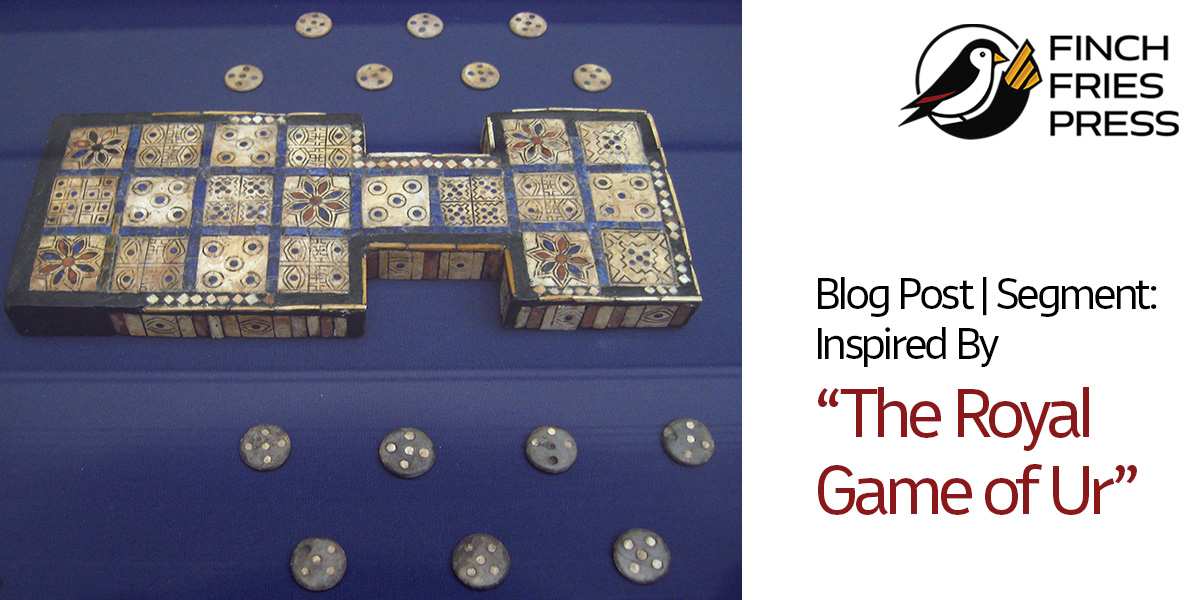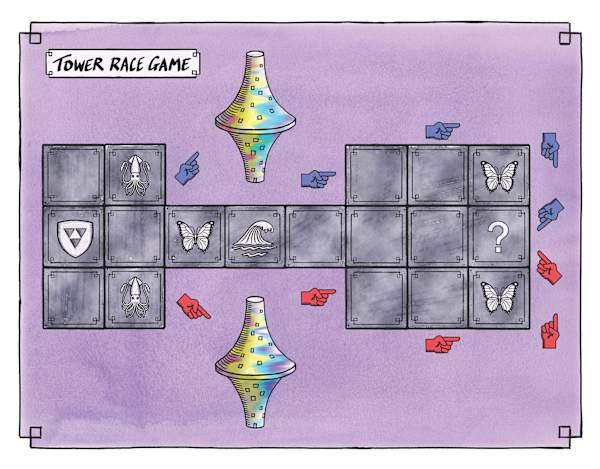The Royal Game of Ur bridges the ancient past with the now. Mesopotamian citizens first enjoyed the two-person race boardgame over four millennia ago, and versions of the game persisted through the 20th century.
While excavating the Royal Cemetery at Ur between 1922 and 1934, Sir Leonard Woolley discovered gameboards like the one pictured in the cover image for this blog post. For perspective, consider that one of my grandfathers was born in 1922. In his youth, the automobile had not reached ubiquity and beasts of burden were still… burdened by us. That’s only two generations ago. If we ballpark one human generation to be about 30 years long, roughly 165 generations fit into a five-thousand-year period. Putting aside all potential causes of enmity, the fact that you or I could sit down with a person from Ancient Sumer and enjoy a simple pastime is poignant.
I recommend checking Irving Finkel’s videos on YouTube for a very good explanation of the game’s history, rules, strategy, and pace. If you’re interested, start here: https://youtu.be/WZskjLq040I?si=VDaro6GyKr1yGvQE
A pastime—a boardgame—that connects people across five thousand years is irresistible for an imagination like mine. In an earlier post, I mentioned that the Sumerians held a belief something along the lines of “all technology and ideas are ancient and merely being rediscovered in the present.” What if, I asked myself, the game we know as the Royal Game of Ur was much older? What if it was something carried forward from a forgotten era?
In considering these questions, we should not forget that in a not-so-long-ago past the very existence of sites like Ur was in question. During the era in which Geological Uniformitarianism (“long time”) and Darwinism were birthed—let’s keep it simple and say the 19th century—descriptions of these places began to be regarded as mere myths or fairytales invented by bored (or drunk) scribes who wrote down the Epic of Gilgamesh and the Hebrew Bible (or, deferring blame, scribes who merely preserved the cultural memories of their bored farmer grandparents who, themselves having moved past the hunter gatherer status of their grandparents, had relied on oral tradition). Sure, that’s an overly simplified view of things, but I’m not above it to make a point.
Side note: The memory floated back to me as I wrote the above that Socrates himself—perhaps two millennia after the heyday of the Sumerians—lamented the younger generations relying on writing as a means of knowledge transfer. Go figure…
Anyway, the appeal of creating an “older” version of the Royal Game of Ur was too much for me. And that led to the reimagined gameboard pictured below (artwork courtesy of Mike Church based on my shoddy sketches).
If you, the reader, navigates to the appendices of Light’s Shadow, you’ll find the rules for the Darktouched tower race game. After watching the Irving Finkel video(s), maybe channel your inner Sumerian/Darktouched and sit down with a sour beer and give the revised rules a try!
PS A friend of mine might be working on a real-life model of the Darktouched version. If that happens, I will definitely post pictures and include a small writeup in a future newsletter.

